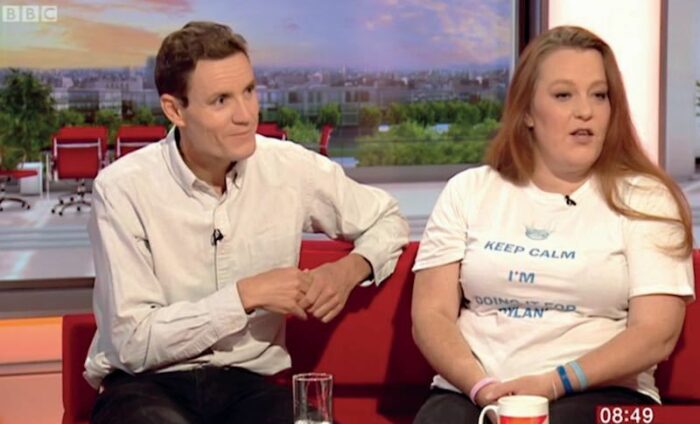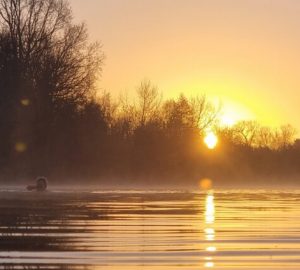
View from the water – We need to teach our children how to stay safe while swimming
We need to teach our children how to stay safe while swimming, says Simon Griffiths
On Friday 14 July, I received a phone call from the BBC: would I be prepared to come into the studio and talk to them about cold water shock? What a brilliant opportunity to talk enthusiastically about outdoor swimming while also giving out the message that sudden cold water immersion can be dangerous for the unprepared, I thought. A few hours later I was on a train to Manchester and the next morning appeared on BBC Breakfast with Naga Munchetty and Jon Kay.
The reason for the BBC’s interest was that the Local Government Association (LGA) had published a press release calling for children to be taught about cold water shock in school swimming lessons. This, in turn, ties in to the RNLI campaign asking people to “Respect the Water”, again with a focus on cold water shock. The questions I was told I would need to answer were: what is cold water shock and did I think it was a good idea for children to be taught about it?
On the train journey I refreshed my knowledge on cold water shock, read and re-read the LGA press release and watched the Respect the Water videos. I thought carefully about the words I would use to find the right balance between expressing my love of swimming outdoors, my belief that it can be an enjoyable and safe activity if you take the right precautions and the need to be aware of the risks, especially that of cold water shock.
Meanwhile, the BBC had found another person to appear in the studio with me. Rebecca Ramsay’s 13-year old son Dylan drowned in 2011 while swimming in Hill Top Quarry, Lancashire. She has since campaigned tirelessly and passionately for drowning prevention. We’d actually spoken through email previously but the first time we met was about 15 minutes before we went on air, while we were having our make-up done.
Having Rebecca in the studio obviously changed the interview. Naga’s first question was to Rebecca, asking her to explain what had happened to Dylan. While the inquest noted cold water shock as the cause of Dylan’s death, Rebecca doesn’t know if that’s truly the case as she believes he was in the water for about 20 minutes before he drowned, whereas the effects of cold water shock normally only last a minute or two.
Naga then asked me whether cold water shock could still affect someone after 20 minutes and to speculate what might have happened. This wasn’t what I’d prepared for, nor was it something I was qualified to talk about! I did my best to answer, explaining how your risks change with time in the water from cold shock, through possible swim failure and then hypothermia. It wasn’t the time or place to talk about the joys of outdoor swimming.
Afterwards I had a chance to chat to Rebecca about her campaign and next issue I want to write more about the work she’s been doing to try to ensure as few parents as possible go through the pain that she has.
The key point for regular outdoor swimmers is that we have a lot of valuable and potentially life-saving experience and knowledge – and we should use it wisely. As I tried to say on television, just knowing about cold water shock can reduce its impact and possibly help someone survive the experience. It therefore seems obvious that we should be teaching children about it whenever the opportunity arises – in schools, in swimming lessons and at home. It would be even better if children could experience it for themselves, in a safe and controlled environment obviously, such as on a school adventure trip.
What seems obvious to regular swimmers might not be to a teenager. If we can share positive messages about the joys of open water and how to stay safe while swimming then fewer people will drown and more will learn to respect the water and possibly become enthusiastic and responsible outdoor swimmers.
Simon Griffiths is the founder and publisher of Outdoor Swimmer.
Email Simon at: simon@outdoorswimmer.com







